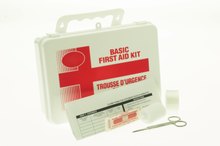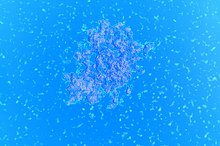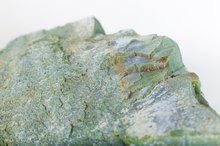Antiseptic Vs. Disinfectant
Antiseptics and disinfectants are the basic tools of cleaning and sanitizing, yet the difference between the two substances is unclear. Knowing the difference between antiseptics and disinfectants and how each works to sterilize wounds or surfaces can help you select the most appropriate product for your needs.
If you are experiencing serious medical symptoms, seek emergency treatment immediately.
Difference
Both antiseptics and disinfectants eliminate disease-causing organisms, notes the Mount Sinai Department of Microbiology 12. The difference is in how each substance is used. Antiseptics are applied to living skin or tissue to prevent infection, whereas disinfectants are applied to surfaces, equipment or other inanimate objects. Disinfectants are stronger and more toxic than antiseptics because they are applied to surfaces, not living tissue.
- Both antiseptics and disinfectants eliminate disease-causing organisms, notes the Mount Sinai Department of Microbiology 1.
- Antiseptics are applied to living skin or tissue to prevent infection, whereas disinfectants are applied to surfaces, equipment or other inanimate objects.
Significance
How to Sterilize Gauze
Learn More
Disinfection kills or removes disease-causing organisms, but not necessarily all organisms present on an object. Heat, radiation, filtration or chemical processes are used to sterilize objects such as medical instruments or surgical or laboratory equipment. If properly sealed, a sterilized object will remain sterile until the seal is broken. Sterilization is uncommon outside of hospital or laboratory settings. In most situations, disinfection is appropriate.
- Disinfection kills or removes disease-causing organisms, but not necessarily all organisms present on an object.
- If properly sealed, a sterilized object will remain sterile until the seal is broken.
Biocides
A biocide is a chemical that acts against organisms. Such chemicals are the active ingredients in antiseptics and disinfectants. Biocides are classified as those that kill organisms or those that inhibit growth. Common antiseptics are chlorhexidine, iodine, 70 percent ethanol and 3 percent hydrogen peroxide, according to Mount Sinai. Widely used disinfectants include:
- alcohol
- glutaraldehyde
- iodine
- copper sulfate
- ozone
- chlorine gas
Some agents, such as chlorhexidine and iodine, can be used as either an antiseptic or disinfectant.
- A biocide is a chemical that acts against organisms.
- Such chemicals are the active ingredients in antiseptics and disinfectants.
Function
Anti-Bacteria Solutions That Can Be Used With a Waterpik
Learn More
Antiseptics and disinfectants work similarly 1. The agents penetrate the cell wall of the organism, such as bacteria. Inside the cell, the action depends on the specific chemical contained in the antiseptic or disinfectant. In general, antiseptic and disinfectant agents damage the cell membrane, disrupt cell metabolism or alter the permeability of the cell wall.
- Antiseptics and disinfectants work similarly 1.
- In general, antiseptic and disinfectant agents damage the cell membrane, disrupt cell metabolism or alter the permeability of the cell wall.
Resistance
Not all organisms respond to all disinfectants and antiseptics, and some organisms develop tolerance or resistance. Some types of organisms are naturally resistant to certain types of biocides. For example, bacteria classified as Gram-negative, which include Escherichia coli and Staphylococcus aureus, tend to be more resistant to biocidal agents than other types of bacteria. Mutations in viruses or bacteria can create acquired resistance to widely used agents.
- Not all organisms respond to all disinfectants and antiseptics, and some organisms develop tolerance or resistance.









